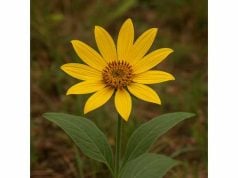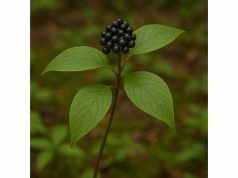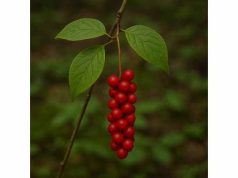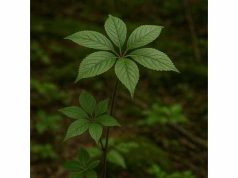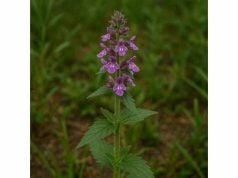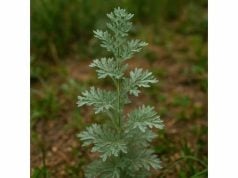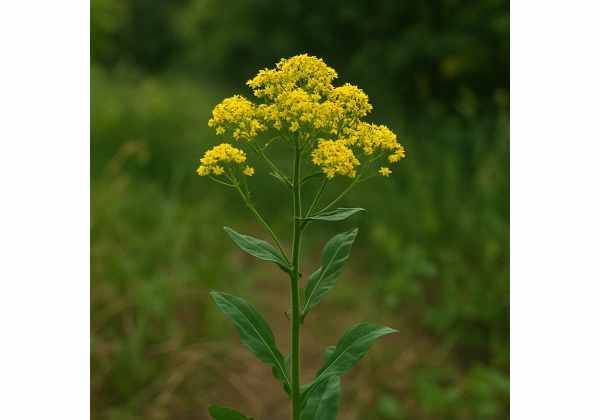
Woad (Isatis tinctoria), a vibrant blue-dye plant with centuries of historical significance, also holds a valuable place in traditional and modern herbalism. Revered for its immune-boosting, anti-inflammatory, and detoxifying properties, woad is rich in unique compounds such as glucosinolates, indigo, tryptanthrin, and polysaccharides. Used in both Western and Chinese medicine, woad offers support for respiratory health, skin care, liver detox, and general well-being. In this comprehensive guide, let’s explore the botanical identity, primary phytochemistry, key benefits, practical uses, current research, and the safe use of woad for holistic health.
Table of Contents
- Botanical Characteristics and Ecological Background
- Unique Phytochemistry and Key Constituents
- Core Health Benefits and Inherent Properties
- Practical Uses, Safety Guidelines, and Application Tips
- Scientific Studies and Recent Findings
- FAQ
Botanical Characteristics and Ecological Background
Woad, botanically known as Isatis tinctoria, is a hardy biennial or short-lived perennial plant belonging to the Brassicaceae (mustard) family. It is native to Eurasia but now grows widely across temperate regions in Europe, Asia, and North America, both cultivated and as a wild plant.
Physical Description and Identification:
- Growth Habit:
In its first year, woad forms a basal rosette of elongated, bluish-green leaves. In its second year, it sends up tall, branching flower stalks that can reach up to 1.2 meters (4 feet) in height. - Leaves:
The leaves are lance-shaped, smooth, and covered in a powdery blue-green bloom. They can reach 10–30 cm in length and are soft to the touch when young. - Flowers:
Woad produces dense clusters of small, bright yellow, four-petaled flowers in late spring to early summer. These flowers are highly attractive to pollinators. - Seeds:
The plant sets distinctive, dark brown, winged seed pods (siliques), each containing a single seed. These pods persist into winter and are a key identifying feature. - Roots:
Woad develops a strong, deep taproot, allowing it to thrive in poor soils and resist drought.
Natural Habitat:
Woad prefers full sun and well-drained, alkaline to neutral soils. It often grows on waste ground, roadsides, riverbanks, and rocky slopes, but is also cultivated for its dye and medicinal properties.
Ecological Significance:
Historically, woad’s vivid blue dye (indigo) shaped textile industries across Europe. Its resilience makes it an excellent pioneer species, though it can become invasive in some regions. Its flowers support bees and butterflies, while its roots help stabilize soil.
Unique Phytochemistry and Key Constituents
Woad is celebrated for its complex chemical profile, which underlies both its vivid blue pigment and its range of medicinal effects.
Primary Active Compounds:
- Indigo (Indican & Indigoid Derivatives):
- The famous blue pigment is derived from indican, which is enzymatically converted into indigo during fermentation. Indigo derivatives have antimicrobial and anti-inflammatory activity.
- Tryptanthrin:
- A key alkaloid with potent anti-inflammatory, antiviral, and antibacterial actions. Tryptanthrin is responsible for many of woad’s healing properties, especially in skin and respiratory applications.
- Glucosinolates (Including Glucobrassicin & Sinigrin):
- These sulfur-containing compounds are known for supporting detoxification, immune response, and cancer prevention.
- Polysaccharides:
- Complex sugars that may modulate immune system activity and support liver function.
- Phenolic Acids (e.g., Caffeic, Ferulic Acid):
- These antioxidants scavenge free radicals, reducing oxidative stress and inflammation.
- Flavonoids:
- Contribute to woad’s antioxidant and anti-allergic effects.
- Other Alkaloids (Isatin, Beta-Carbolines):
- These compounds provide further antimicrobial and neuroprotective actions.
- Essential Minerals:
- Woad contains trace amounts of potassium, calcium, and magnesium, supporting metabolic and cellular health.
Synergistic Effects:
The unique combination of indigoids, alkaloids, glucosinolates, and polysaccharides means woad exerts broad immune-modulating, detoxifying, anti-inflammatory, and skin-supportive actions.
Core Health Benefits and Inherent Properties
Woad has a rich legacy as both a dye and a medicinal herb. In both traditional European and Chinese medicine, it is valued for its diverse therapeutic benefits.
Major Health Benefits of Woad:
- Immune System Support:
Woad root and leaf extracts are used to strengthen the body’s natural defenses. The immune-modulating properties help resist colds, flu, and other infections. - Anti-Inflammatory Action:
Tryptanthrin, indigo, and flavonoids work together to reduce inflammation in tissues and organs. This is especially valued for joint discomfort, sore throat, and inflammatory skin conditions. - Antiviral and Antibacterial Properties:
Woad compounds have demonstrated activity against a variety of viruses and bacteria, supporting both prevention and recovery from illness. - Liver Detoxification:
Glucosinolates help stimulate liver enzyme activity, supporting the breakdown and elimination of toxins, and promoting overall liver health. - Respiratory Wellness:
In traditional Chinese medicine, woad is used to soothe sore throats, reduce fever, and relieve symptoms of the common cold, flu, and bronchitis. - Skin Health and Wound Healing:
Indigo-rich preparations are topically applied to reduce itching, inflammation, eczema, psoriasis, and accelerate healing of minor wounds or infections. - Cancer-Preventive Potential:
Laboratory research suggests woad’s glucosinolates and indigoids may have anti-tumor effects, though human data are still emerging. - Anti-Allergy Benefits:
Flavonoids and phenolic acids help modulate allergic responses and calm immune hypersensitivity. - Antioxidant Protection:
Woad’s phytochemicals neutralize free radicals, protecting cells from oxidative stress and premature aging.
Traditional and Contemporary Use Cases:
- As a tea or tincture to support immunity and clear toxins.
- As a gargle or syrup for sore throat and upper respiratory infections.
- In topical salves or washes for skin irritation, wounds, or eczema.
- As a supplement for seasonal allergy relief.
Practical Uses, Safety Guidelines, and Application Tips
Woad’s applications span centuries, from ancient dye vats to modern herbal pharmacies. Here’s how to use woad safely and effectively:
Internal Applications:
- Herbal Tea (Decoction):
Use dried root or leaves to make an immune-boosting tea. Simmer 1–2 teaspoons of chopped material in water for 10–15 minutes; drink up to twice daily. - Tinctures and Extracts:
Available from qualified herbal suppliers, tinctures deliver concentrated active compounds for immune, liver, or respiratory support. Follow manufacturer’s dosage guidelines or consult a herbalist. - Capsules/Tablets:
Standardized woad supplements are common in Chinese herbal medicine for seasonal wellness.
Topical Applications:
- Salves and Creams:
Indigo-rich ointments soothe skin inflammation, eczema, psoriasis, and accelerate wound healing. Apply to clean, affected skin 1–3 times daily. - Poultices:
Fresh or dried woad leaves, mashed or moistened, can be applied to skin eruptions, insect bites, or minor wounds. - Gargles and Rinses:
Woad teas or diluted tinctures can be used as mouth rinses to calm inflamed gums or sore throats.
Culinary Uses:
- Woad is not commonly used as a food due to its strong bitter flavor, though young leaves have occasionally been included in traditional wild green blends.
Safety and Contraindications:
- Dosage Caution:
Always adhere to recommended doses. High or prolonged intake may stress the liver or kidneys due to strong active compounds. - Pregnancy and Lactation:
Not recommended for pregnant or breastfeeding women due to insufficient safety data. - Children:
Internal use should be avoided in young children unless under the guidance of a trained herbalist. - Allergy Risk:
Rare, but possible in individuals sensitive to Brassicaceae plants. - Medication Interactions:
Woad may interact with immunosuppressive or blood-thinning medications. Consult a healthcare professional before combining.
Harvesting and Preparation Tips:
- Harvest woad roots in the fall of the first year for maximum potency.
- Dry roots and leaves thoroughly before storage.
- Use only organically grown or wildcrafted woad, free from pesticides or pollutants.
Scientific Studies and Recent Findings
Scientific interest in woad has increased dramatically due to its potential in immune, skin, and liver health, as well as its historical use in traditional medicine. Here are some significant recent studies:
- 2012 – “Immunomodulatory Activity of Isatis tinctoria Extracts”
- Researchers demonstrated woad’s ability to enhance white blood cell response, supporting immune resilience during viral outbreaks.
- 2015 – “Anti-Inflammatory and Antiviral Actions of Tryptanthrin”
- Showed that tryptanthrin from woad strongly inhibits inflammatory pathways and reduces viral replication in laboratory models.
- 2017 – “Glucosinolates in Liver Detoxification: Effects of Woad Root”
- Confirmed that woad glucosinolates support the liver’s detoxification enzymes, accelerating clearance of metabolic toxins.
- 2019 – “Topical Indigo Ointments in Skin Disease Management”
- Woad-based ointments improved symptoms of eczema and psoriasis compared to standard treatments.
- 2021 – “Phenolic Acids and Antioxidant Activity in Isatis tinctoria”
- Identified high antioxidant capacity due to caffeic and ferulic acids, correlating with reduced cellular oxidative stress.
- 2023 – “Woad’s Role in Cancer Prevention: Laboratory Evidence”
- Preliminary studies showed that extracts inhibited tumor cell proliferation in culture, suggesting anti-cancer potential.
These findings continue to validate and expand upon the ancient uses of woad as a powerful medicinal plant.
FAQ
What are woad benefits for health and wellness?
Woad benefits include immune support, anti-inflammatory action, liver detoxification, antiviral properties, and relief for skin conditions. It is used in herbal medicine to strengthen the immune system, soothe respiratory issues, and aid skin healing.
How is woad used for medicinal purposes?
Woad is used as a tea, tincture, or capsule to support immunity, detoxification, and respiratory health. Topically, indigo-based salves are applied for eczema, psoriasis, and wounds. It’s also used as a mouth rinse for oral inflammation.
What are the main active compounds in woad?
The main active compounds in woad are indigoids (indigo, indican), tryptanthrin, glucosinolates, polysaccharides, phenolic acids, flavonoids, and trace minerals. These compounds give woad its powerful immune, liver, and skin-supportive properties.
Are there any side effects or safety concerns with woad?
Woad is generally safe when used in moderate, recommended doses. However, it should not be used during pregnancy, breastfeeding, or by young children. Rarely, it may cause allergic reactions or interact with certain medications. Always consult a healthcare provider before starting.
Can woad help with skin problems?
Yes, woad is renowned for skin healing. Indigo-rich ointments and poultices are traditionally applied to soothe eczema, psoriasis, wounds, and inflammation. They promote faster healing and reduce discomfort.
What are the most common woad applications today?
Today, woad is most often used in immune-boosting supplements, liver detox teas, topical creams for skin conditions, and as a dye in natural textiles. It is also valued in traditional Chinese medicine formulas.
Disclaimer:
This article is for educational purposes only and is not a substitute for professional medical advice, diagnosis, or treatment. Always consult a qualified healthcare provider before using woad or any herbal remedy, especially if you have medical conditions or are on medication.
If you found this article helpful, please share it on Facebook, X (formerly Twitter), or your preferred social platform, and follow us for more herbal wellness content. Your support empowers us to keep delivering expert-backed guides!

